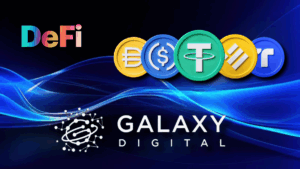Stellar introduced Horizon 2.0 as an alternative for small businesses and teams to run infrastructure for the Stellar network easier. The new version makes it possible to implement the infrastructure with fewer resources. As a result, more teams can run Horizon and benefit from the Stellar opportunities.
Stellar believes new development teams and businesses can now run systems based on their needs, increasing the chance to attract more users.
Easier Stellar Implementation
Blockchain communities are always trying to make it easier for businesses and development teams to implement their services. It makes blockchains more viable solutions for businesses. They need the least burdens and resource needs to migrate their systems to the decentralized world.
Stellar focuses on companies as one of the essential customer groups. It’s trying to make implementation as easy as possible for them. Horizon 2.0 is one of these actions that lets businesses deploy the system with fewer resources, under lower constraints, and more flexibility.

The old version of Horizon forced businesses to run a Stellar Core node to deploy Horizon. As a result, companies needed a vast amount of resources to run the node. Besides, there were lots of complexities in the old system that created a burden for businesses. Horizon 2.0 is aimed to remove those burdens by helping companies choose a setup that fits their needs. In other words, they deploy the Horizon based on their needs, and no extra component will be needed.
With Horizon 2.0, companies choose between running a validator or only running Horizon. If they want to become validators, they should deploy the Stellar Core node. But for businesses that only need Horizon, deploying an API server is enough.
The new version of Horizon decreases the required resources for companies. According to the announcement:
“As already mentioned, the system requirements differ from previous architectural versions largely due to the changes in how Stellar Core interacts with Horizon. Specifically, the in-memory database requires around 3 GiB of RAM, and the disk space requirements have dropped significantly (again, by hundreds of gigabytes).”
Although the requirements for Horizon 2.0 have dropped, businesses need faster machines for faster ingestion in the Stellar blockchain. But after all, staying online will need fewer resources and is going to be more viable.
According to Stellar, Horizon 2.0 has many benefits compared to the last version. Reduced disk space requirement, in-memory transactions because of the optimized Captive Stellar Core, faster ingestions, and no more database requirements for Stellar Core are some of the vital improvements.
If you are interested in this project and want to be informed about everything that happens, visit our Stellar news section












